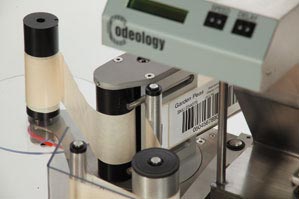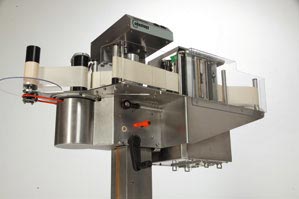Flexible living accommodation
No other ink jet company has yet found a cost-effective way of mounting print heads on conveyor lines so that they have rigidity, but also the degrees of movement necessary to prevent damage. Codeology’s tension arm concept still allows the sideways movement necessary to maintain print quality during operation. Main drive roller spindle: High side loads and dusty environments coupled with start-stop conditions. The original designs used ball bearings. These suffered due to dust contamination, especially biscuit dust, flour etc. igus® iglidur® G plastic plain bearings proved unaffected by the environment. The bearing flange also maintains the vertical position of the drive roller, whereas vertical forces with the ball bearing design could wind the roller into the surrounding metalwork. Stand winding handle and rack and pinion spindles: Used infrequently, but with very heavy side loads. The spindles only rotate occasionally and at very low speeds, so spindle play is unimportant and very low tolerances are possible. Therefore, Codeology is able to laser cut holes for the bearings in the 3mm stainless steel side plates. The bearing flanges are used to butt up against the spindle fixing cirlips, thus holding both the spindle and the bearing in place. No other bearing could cope with this, as any other technology would require a machined hole to tight tolerances, adding extra cost. The laser cut holes cost tenths of a penny, giving a bearing solution for pennies, rather than pounds per spindle. Idler rollers: Intermittent operation and high side loads, coupled with extremely limited space make an igus® bearing necessary in these spindles. Alternative roller bearings would not fit easily into the space. Those that do fit tend to be far more expensive than igus® bearings. The bearing flanges also allow the rollers a degree of vertical movement on the spindles, with the flanges acting as stop ends on the chassis plates or spindle circlips without hampering the spindle rotation.

Tension arms: The tension arms have very heavy radial loads, with the 250mm length of an arm pivoting from one end on the igus® bearing. The arms are only 20mm wide, in which roller bearings will not fit and still allow the use of a big enough spindle to cope with the loads. The thin sleeve of the igus® bearings allows a 15mm spindle to be used in the 20mm arm. "With igus® bearings we were able to take the opportunity to use existing labelling methods but add newer bearing technology into a totally new design. Where previously many ball bearings would have been used, we have incorporated various igus® bearings instead. These have proved to be easier to install, lower cost and offer improved performance (in terms of ease of maintenance and improved life expectancy) over ball bearings."

Jim Mason
Director
Codeology